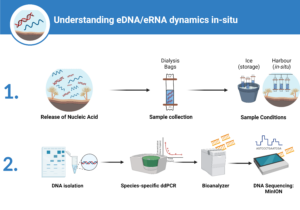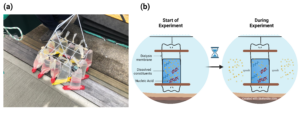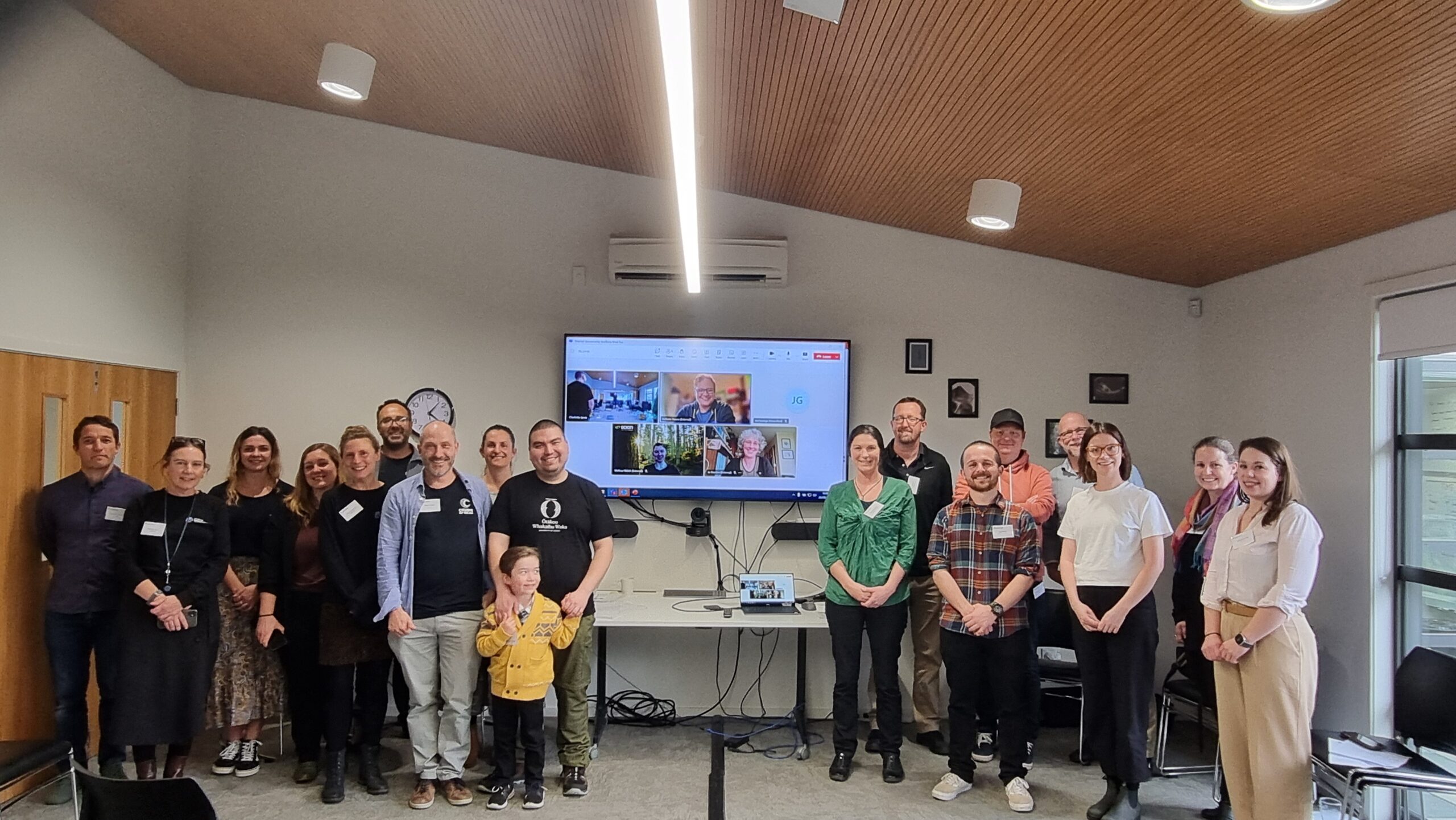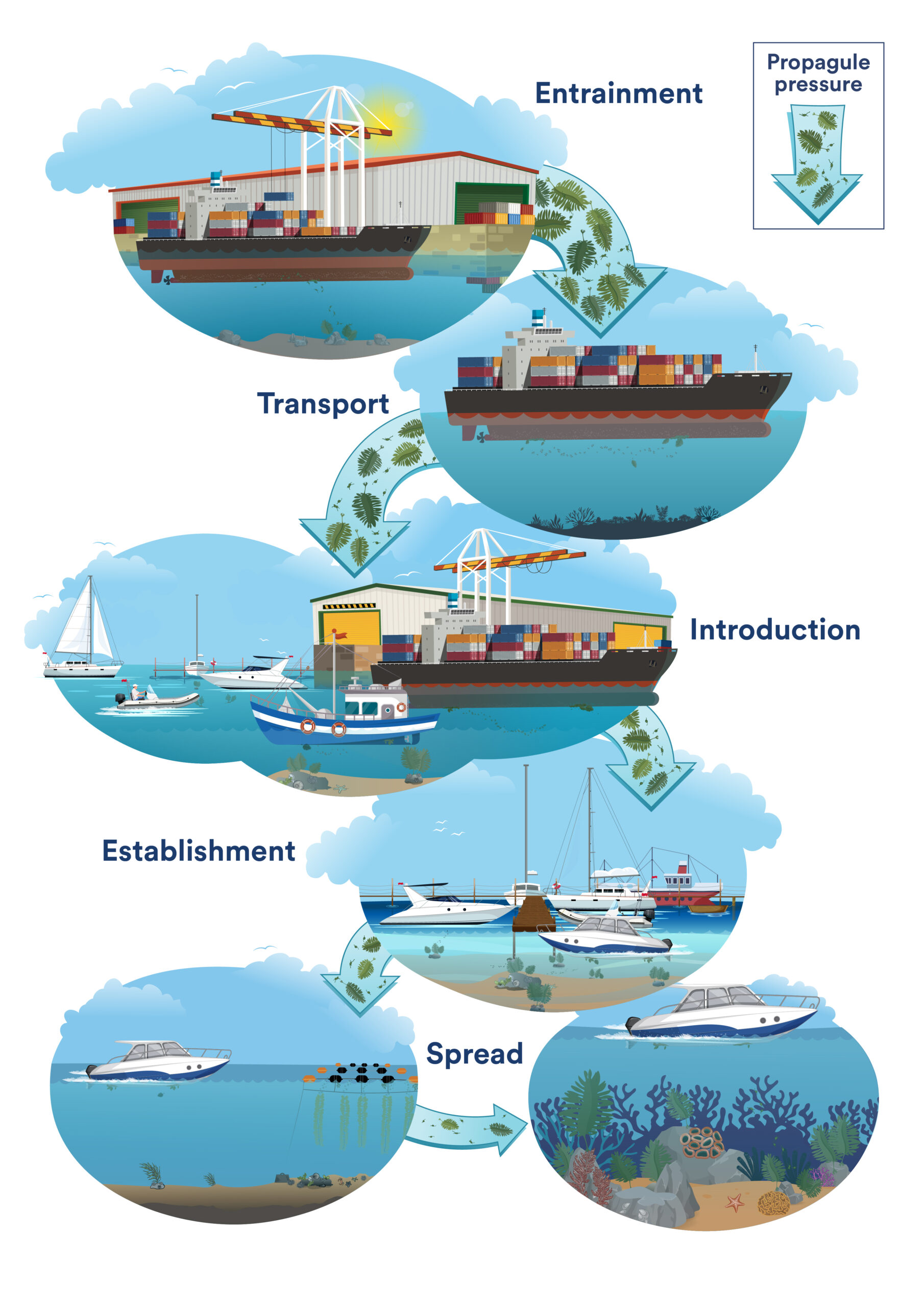Last year over 700 boat owners who have non-trailered boats moored in marinas around Aotearoa…
Environmental DNA–RNA dynamics provide insights for effective monitoring of marine invasive species
We are thrilled to announce the latest publication from Michelle Scriver’s, part of the DETECT team within the Marine Biosecurity Toolbox, PhD project. Recently published in the Environmental DNA journal, this manuscript delves into the intriguing world of environmental DNA and RNA (eDNA/eRNA) to advance biodiversity monitoring and biosecurity efforts. The study addresses critical uncertainties surrounding persistence and the behaviour of marine nucleic acids in their natural environment and during storage.
We conducted this experiment in an Auckland marina, a hotspot for non-indigenous marine species. Using permeable dialysis bags filled with seawater from a nearby Sabella spallanzanii colony, we simulated real-world environmental conditions and field storage to understand eDNA/eRNA dynamics. The findings of our study challenge conventional decay models, revealing inconsistent signal patterns and unexpected changes in eDNA fragmentation. In addition, the results from long-read sequencing by Oxford Nanopore Sequencing provided valuable insights into microbial influences on eDNA dynamics.

The schematic outlines sample collection conditions and tests conducted, including species-specific droplet digital PCR, Bioanalyzer analysis, and long-read sequencing from Oxford Nanopore, to understand changes in eDNA/eRNA molecules in the field and during storage. This figure was made in © BioRender: biorender.com.

(a) Dialysis bags were deployed into Auckland’s Viaduct marina to evaluate the in-situ dynamics of Sabella spallanzanii environmental DNA (eDNA) and RNA (eRNA) signal. (b) Diagram illustrating the passage and exchange of smaller dissolved constituents through the pores of the permeable dialysis bags. This figure was made in © BioRender: biorender.com.
These discoveries hold significant implications for refining survey interpretation and optimizing sampling strategies, which are crucial for effective environmental management. By advancing our understanding of eDNA/eRNA dynamics, we aim to contribute to the preservation and restoration of our precious marine ecosystems.
Check out the paper in Environmental DAN published in March here!




Comments (0)